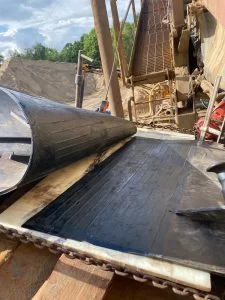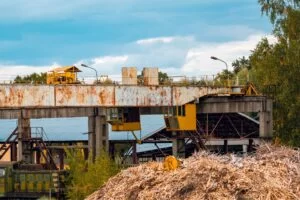A team of researchers have found that a resilient grass species traditionally used to add texture to more wild gardens may become the first choice in biofuel production.
9, a:1:{i:0;s:8:”defaults”;}, belt cleaners, Research Suggests Highly Resilient Grass Could Be Used As Biofuel, A team of researchers have found that a resilient grass species traditionally used to add texture to more wild gardens may become the first choice in biofuel production., A team of researchers have found that a resilient grass species traditionally used to add texture to more wild gardens may become the first choice in biofuel production.
According to the study, published in Biotechnology for Biofuels, Miscanthus has the resilience in changing weather conditions, the ability to photosynthesise in colder temperatures and a high level of both carbon dioxide absorption and biofuel yield that it has become a favoured choice for biofuels.
This study is vital not only to increase biofuel production in less ideal conditions but also to avoid using food crops such as corn as a biofuel, and serves as a starting point to developing drought and flood-resistant biofuel crops.
Whilst there are many plants in the Miscanthus genus, the main focus of the research was four particular types of Miscanthus plant, sacchariferous, sinesis, x giganteus and a hybrid bred from all three.
These species are common in Korea, China and Japan and have been used for foraging for millennia, and are already used in biofuel production. A ten-year trial found that per hectare miscanthus was more efficient for producing bioethanol than corn or switchgrass.
They were tested in drought and flood conditions to determine how resilient they are in more extreme weather, and whilst they struggled with a lack of moisture, they were as good if not better in flooded conditions.
This was one of the first major studies about the resilience of a highly used biofuel crop in less-than-ideal conditions.
This makes them suitable for use in fields that easily find themselves waterlogged and therefore are less reliable for other crop growth in wet weather, such as agricultural land in the UK that is not suitable for growing crops.
Biofuels is a type of fuel that is derived from biomass, which is any plant material that can be burned to produce heat or energy.
Whilst technically burning wood on a fire counts as a biomass source, most biofuel generation involves the conversion of these materials into a liquid or gas that can be used in a similar way to fuel.
The source of the fuel is important, as whilst biofuels are renewable, how environmentally friendly they are depends on the type of fuel that is used, and there are implications when farmland is used for biofuel development.
There are three main categories of biofuel, usually classified as generations. First-generation biofuels are derived from sugarcane, cornstarch and other food sources.
This has led to an ethical dilemma where farmers have to decide how they divide their crop yield between food and fuel.
The second generation of biomass includes Miscanthus, as well as other non-food crops, as well as agricultural and kitchen waste. As the former can be grown in areas that would not affect the growth of food, there is immense potential.
Second generation biomass also includes using parts of a crop that previously could not be converted into biofuels such as lignocellulose and other material that needs to be broken down using bacteria.
As well as this there is a third-generation being researched that explores the use of microalgae, which is abundant and capable of significant yields but require a significant amount of research to be developed at scale.
For more information about conveyor belt cleaners for biofuel production, get in touch today., field_544dcaa8220f0, , field_543e9601d7f94, 29




